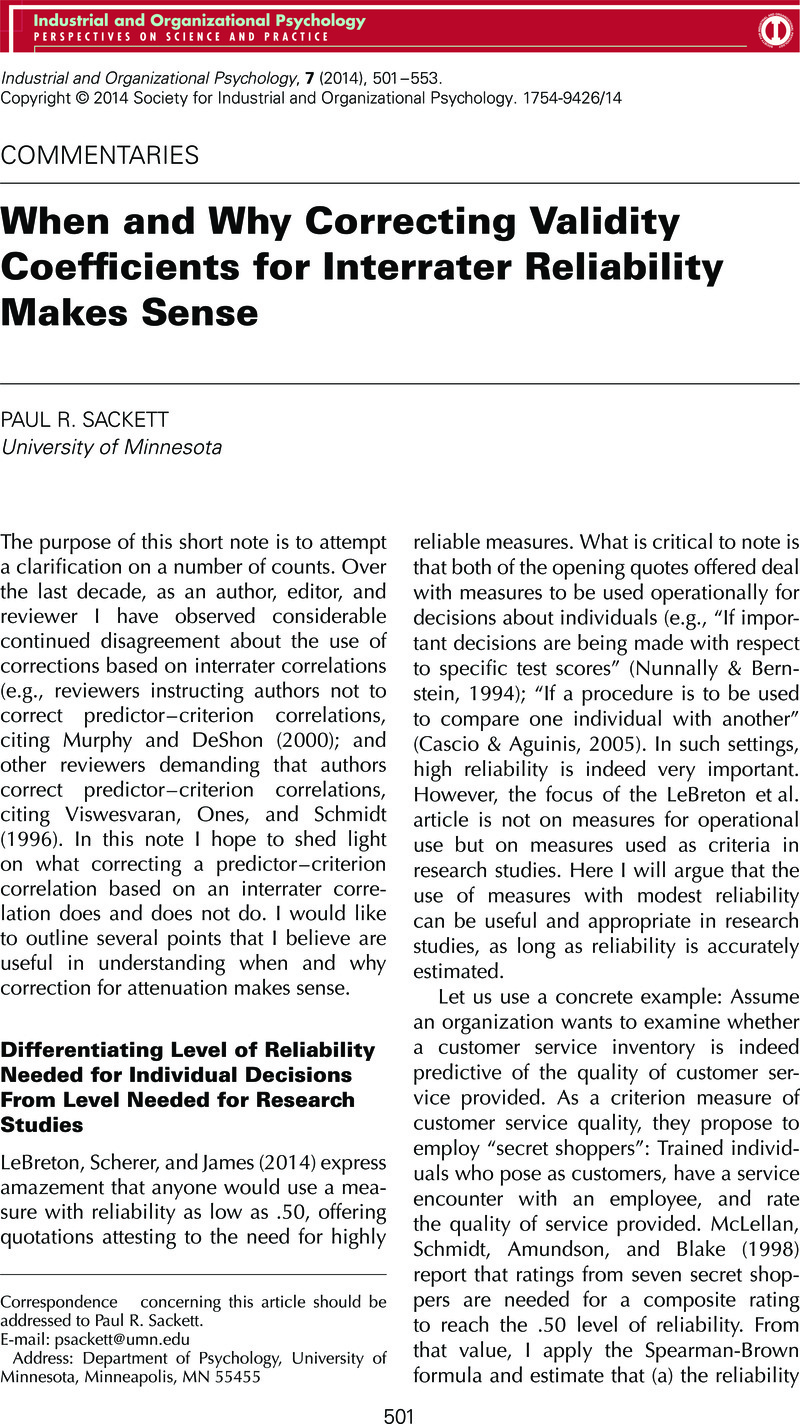No CrossRef data available.
Article contents
When and Why Correcting Validity Coefficients for Interrater Reliability Makes Sense
Published online by Cambridge University Press: 10 April 2015
Abstract
An abstract is not available for this content so a preview has been provided. Please use the Get access link above for information on how to access this content.

- Type
- Commentaries
- Information
- Copyright
- Copyright © Society for Industrial and Organizational Psychology 2014
References
American Educational Research Association (AERA), American Psychological Association (APA), and National Council on Measurement in Education (NCME). (1999). Standards for educational and psychological testing. Washington, DC: Author.Google Scholar
Cascio, W. F., & Aguinis, H. (2005). Applied psychology in human resource management (6th ed.). Upper Saddle River, NJ: Prentice Hall.Google Scholar
Ghiselli, E. E., Campbell, J. P., & Zedeck, S. (1981). Measurement theory for the behavioral sciences. San Francisco, CA: W.H. Freeman and Co.Google Scholar
Hardison, C. M., Sackett, P. R., & Mitchell, T. W. (2002, April). Customer ratings of performance: A useful criterion for validation research? Paper presented at the Annual Conference of the Society for Industrial and Organizational Psychology, Toronto, Canada.Google Scholar
LeBreton, J. M., Scherer, K. T., & James, L. R. (2014). Corrections for criterion reliability in validity generalization: A false prophet in a land of suspended judgment. Industrial and Organizational Psychology: Perspectives on Science and Practice, 7(4), 478–500.Google Scholar
McLellan, R. A., Schmidt, M., Amundson, M., & Blake, R. (1998, May). Secret shopper as an individual-level criterion for validation studies. Paper presented at the Annual Conference of the Society for Industrial and Organizational Psychology, Dallas, TX.Google Scholar
Murphy, K. R., & DeShon, R. (2000). Interrater correlations do not estimate the reliability of job performance ratings. Personnel Psychology, 53(4), 873–900.Google Scholar
Nunnally, J. C., & Bernstein, I. H. (1994). Psychometric theory (3rd ed.). New York, NY: McGraw-Hill.Google Scholar
Van Iddekinge, C. H., Roth, P. L., Raymark, P. H., & Odle-Dusseau, H. N. (2012). The criterion-related validity of integrity tests: An updated meta-analysis. Journal of Applied Psychology, 97(3), 499.Google Scholar
Viswesvaran, C., Ones, D. S., & Schmidt, F. L. (1996). Comparative analysis of the reliability of job performance ratings. Journal of Applied Psychology, 81(5), 557.Google Scholar


